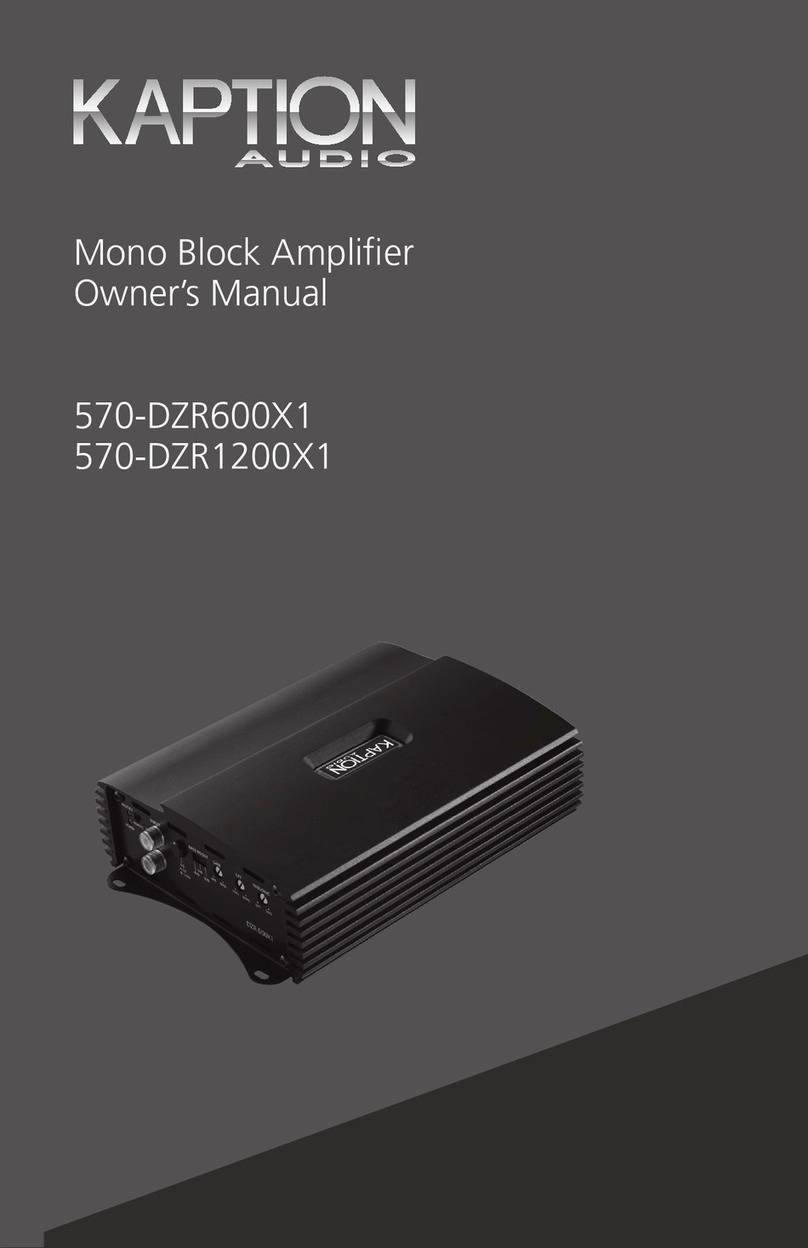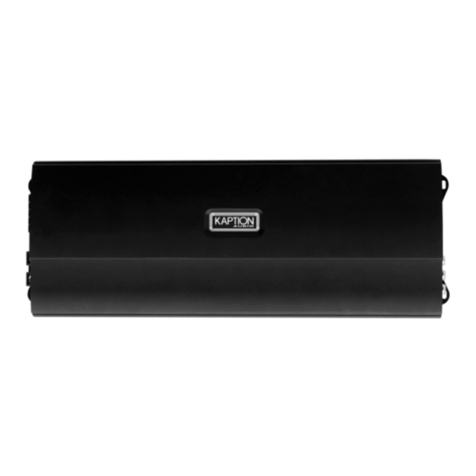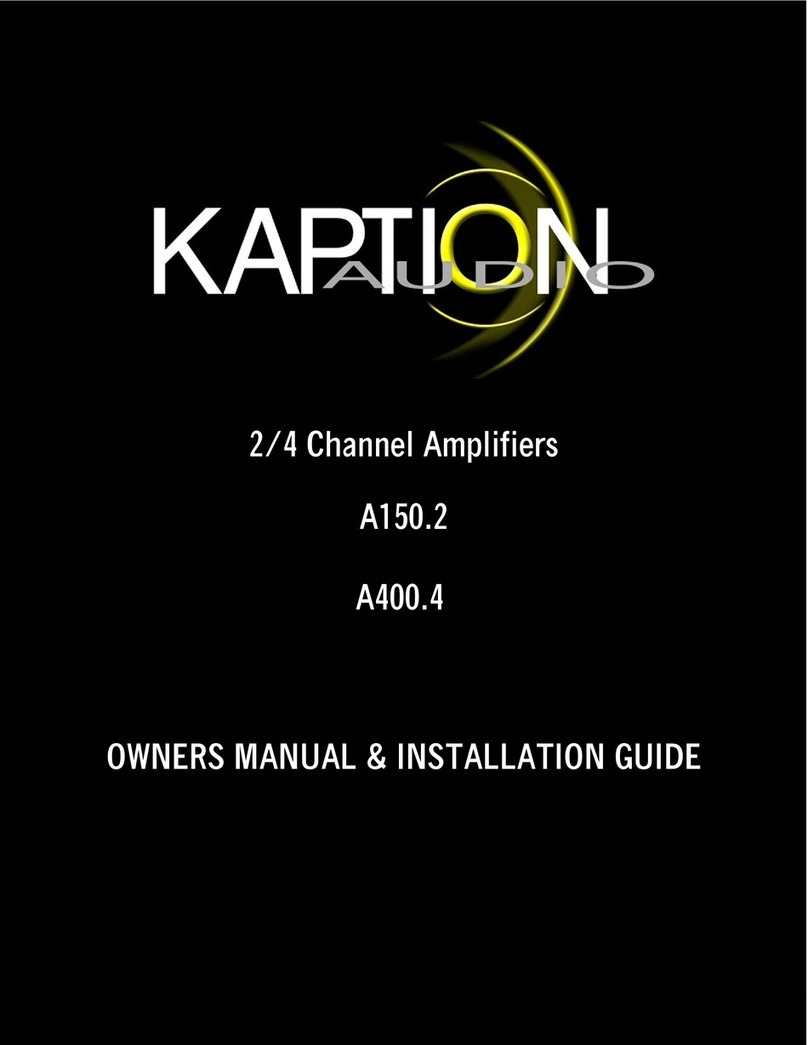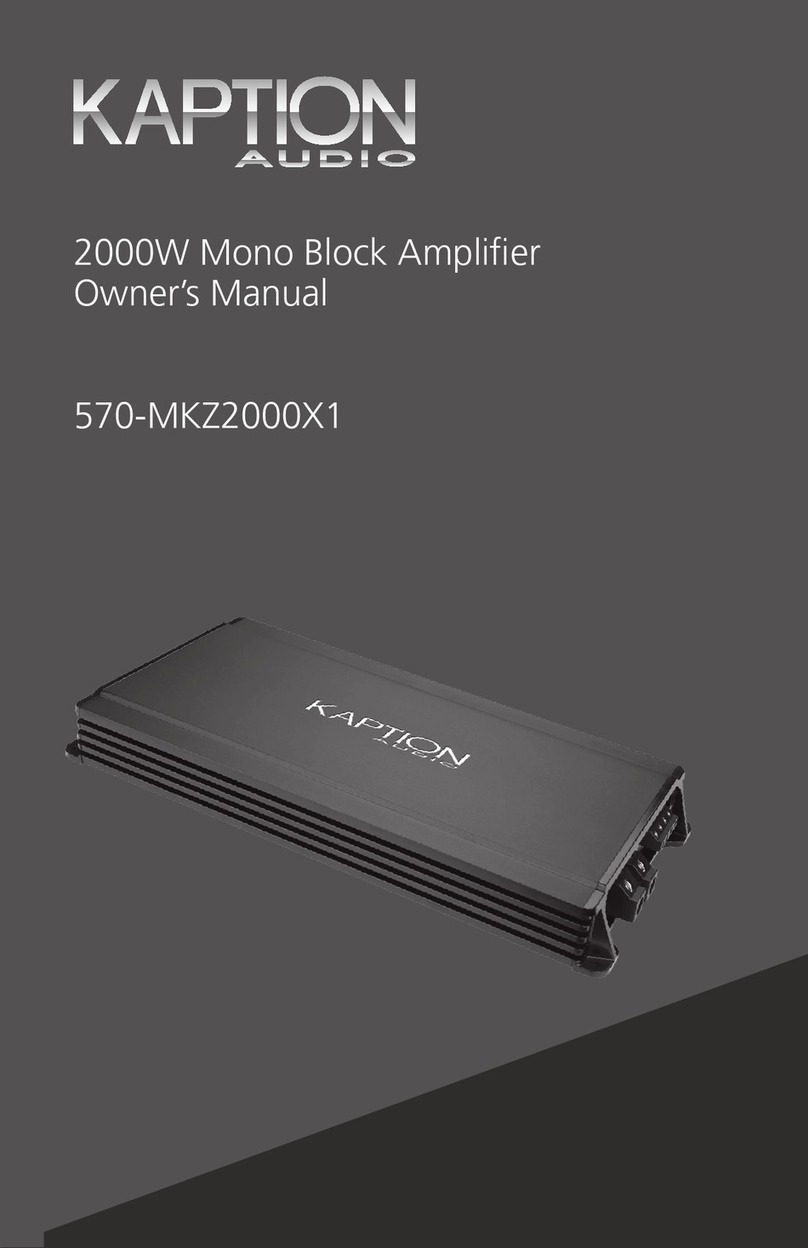
4. Bridge Module
• Allows for the two amplifiers to be run in series and achieve
double the output into one load.
5. Power Indicate LED
• Lights blue when the power turns on.
6. Protection Indicate LED
• Lights red when the short protection operates.
7. Low Level Inputs
• These are the Low Level signal inputs and are connected to the
source unit (Radio, Crossover or Equalizer).
8.Bridged Input
• Signal input from the master amplifier in a two amplifier
bridged mode setup.
9. Bridged Output
• Signal output connected to the slave amplifier in a two amplifier
bridged mode setup.
10. Input Level Adjustment
• This input sensitivity adjustment is used to match the output
signal from the radio or source unit to the input of the
amplifier. The input section will handle a wide range of signal
voltages from 250mV to 6V. Please note following explanation:
In the min. Position (max. anticlockwise), the amplifier is the
least sensitive to input voltages, and as a result, requires a
higher input voltage: 6V. In the max. Position (max clockwise),
the opposite applies and the amplifier is the most sensitive at
250mV Therefore, if your radio has a low level signal output of
1V, the input level adjustment would be closer to the max.
position than the min. position. This is because a 1V signal is
low so the amplifier sensitivity must be fairly high. The aim is to
have the input level set to as close to the min. position as
possible, and therefore reduce unwanted noise while
maintaining the correct rated output. It is important to
remember that this adjustment is not a volume control. If the
sensitivity is set needlessly high, it may result system and
engine noise, blown speakers and damage to the amplifier may
result.
11. Bass Boost Adjustment
• Allow for up to 18dB of boost at 45Hz for the speaker outputs
when turned clockwise.
12. Variable Low Pass Filter
• Adjust from 40Hz to 250Hz with a slope of 24dB per octave.
This allows for the adjustment of the upper point of the
frequency bandwidth and the respective subwoofer.
4

































